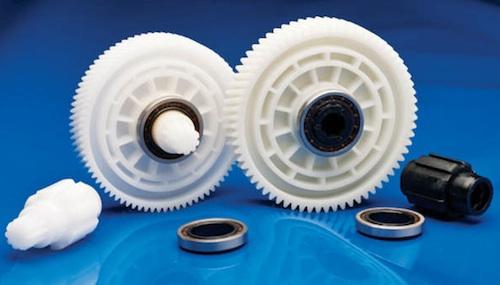Engineering Plastics Get Tough, Lightweight
November 4, 2013

Engineering plastics continue to be designed into more and more parts and components for a broad variety of applications. Their versatility, durability, light weight, and easy customization make them appealing to engineers for solving design problems in a number of industries, from tiny medical devices to huge offshore oilrigs.
A recent study by market research firm Ceresana revealed that the three largest categories of global demand are coming from consumer goods, electronics and electrical uses, and the transportation industry. The first two categories combined represent nearly 25 percent of overall demand.

Consumer electronics is definitely among the fast-growing application areas for engineering thermoplastics, says Matthew Gray, director of consumer electronics marketing for SABIC's Innovative Plastics business. The continuing trend toward smaller, lighter, yet stronger devices has meant that engineering thermoplastics -- including those derived from biological, petroleum, and recycled sources -- are all in demand. Which type is chosen depends on customer preference.
"Some customers have large, well developed sustainability programs in consumer electronics," Gray told us:
One way we help them with their closed-loop recycling programs is taking recovered materials from recycled copiers and printers and converting them into raw materials used to manufacture new machines. Other customers like to use materials that contain post-consumer or post-industrial content. We have several options within the VALOX iQ resin and XENOY iQ resin families to meet these needs. Some grades provide up to 65 percent recycled content.
VALOX iQ is a PBT (polybutylene terephthalate) containing some post-consumer PET (polyethylene terephthalate) feedstock, with a 50 to 85 percent lower carbon footprint and about 10 to 15 percent higher flow than standard PBT resins. XENOY iQ is a blend of PBT or PET with PC (polycarbonate), known for its chemical, impact, and heat resistance.
Several of SABIC's customers prefer materials derived from bio-based sources. For example, certain grades of its LEXAN HFD copolymer resin contain up to 10 percent castor oil, while still delivering high-flow ductility, impact resistance even at low temperatures, and the ability to do in-mold decoration.
Most of what's driving these demands in consumer electronics centers on three basic trends: the continued miniaturization of devices, a growing consumer emphasis on aesthetics, and innovation in wearable technology. Says Gray:
Although devices are getting smaller, customers also want them to be increasingly multi-purpose. As a result, engineering thermoplastics must do more with less. For example, dielectric and heat conductive thermoplastics compounds enable smartphone and tablet OEMs to consolidate parts and integrate the antenna into a device's framework.
The resulting integration produces a thinner, more lightweight phone, and the saved space creates new design options.
About the Author(s)
You May Also Like


.jpg?width=300&auto=webp&quality=80&disable=upscale)
